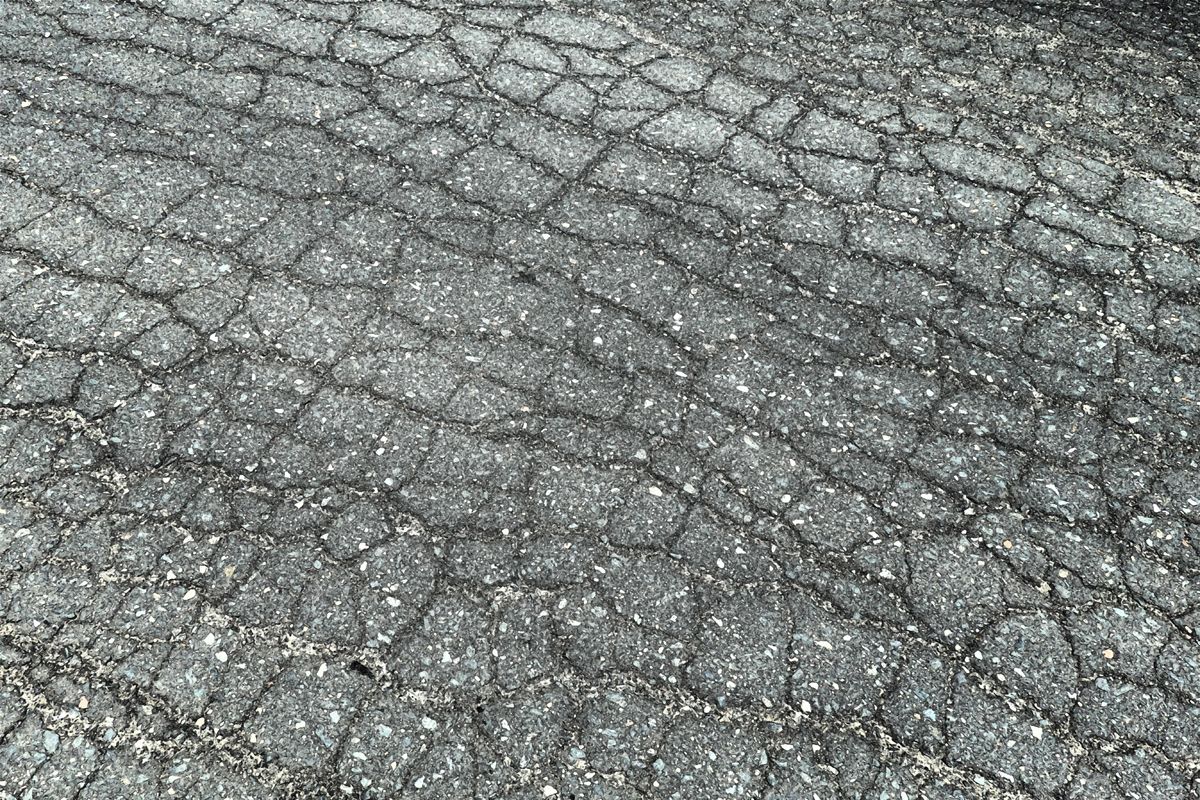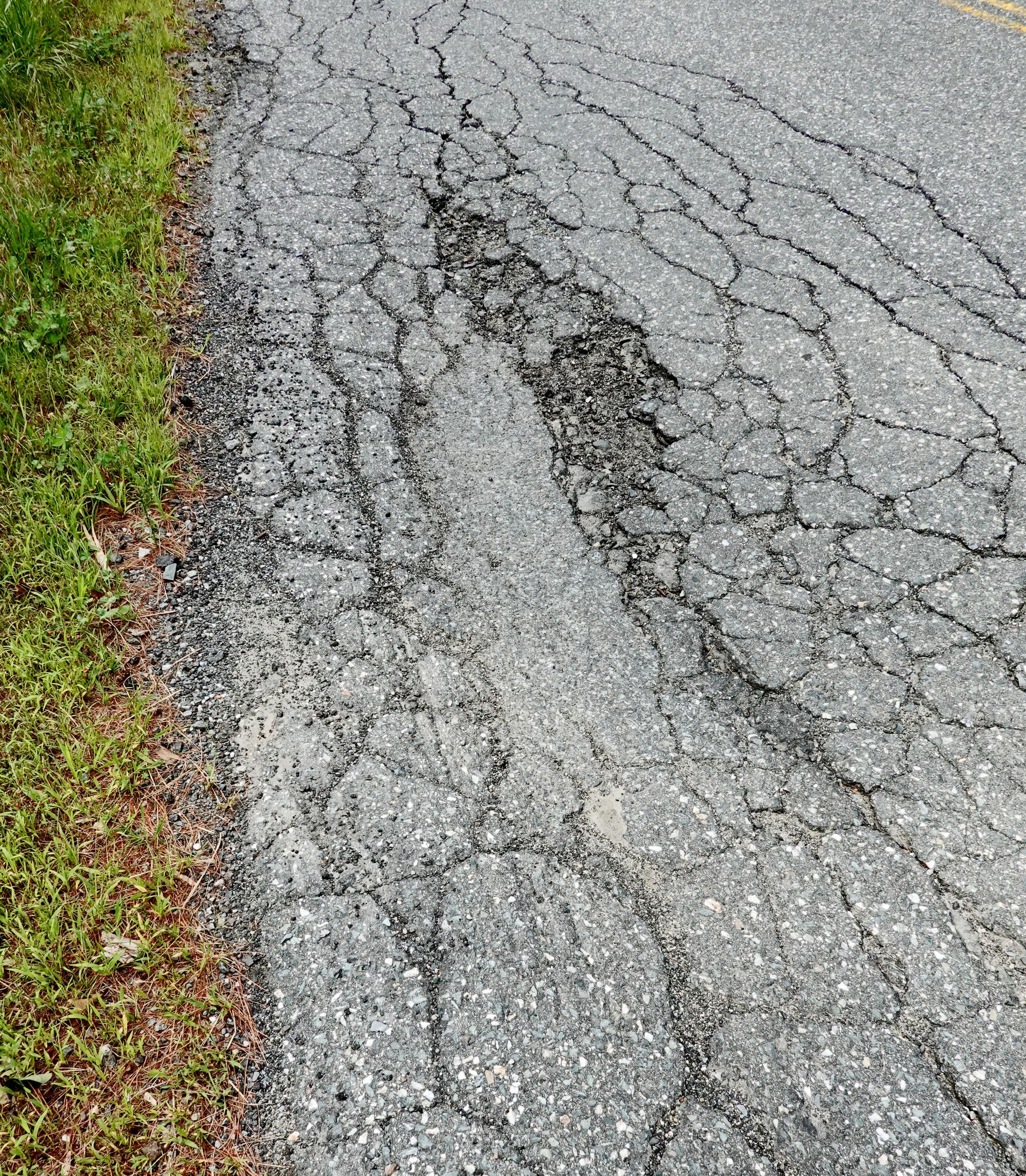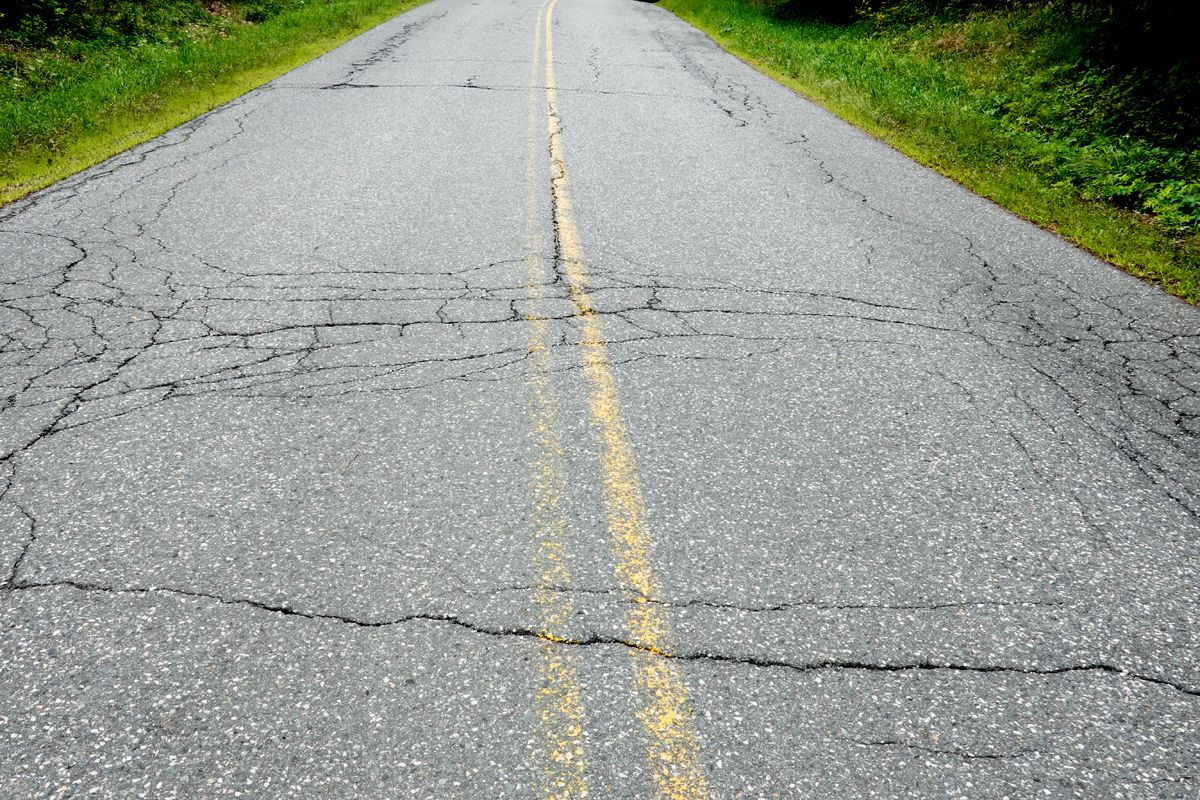The language of road cracks informs a five year repair plan
The amount of road deterioration from one pass of a tractor-trailer is equivalent to that from 9,600 passenger cars.

It’s no secret that there’s room for improvement in the condition of Thetford roads. And it’s also a fact of life that roads have always been our single biggest municipal expense. In 2021, Thetford budgeted $1,357,523 for road maintenance, just under 46% of a total budget of $2,953,219. We’re finally rebuilding Route 132, the worst offender and source of flat tires, buckled wheel rims, and angry calls to Town Hall. But rebuilding just the south part (Tucker Hill Road to the Norwich line) has required an "up to" $4 million bond.
Certainly we do not have the money or resources to repair everything that needs to be done in short order. The Town has to find a way to prioritize road repairs based on facts and findings. That is why the engineers from Stantec Inc. will be assessing all the town’s roads over the next couple of months. Their findings will be used to generate a five-year plan.
One of the first things they will do is “read the road cracks.” While this sounds absurd, a surprising amount of information is conveyed by cracks in asphalt pavement. But how do cracks happen?
When asphalt pavement is new it is somewhat pliable and thus yields under pressure. However road surfaces get brittle with age due to oxidation of the tarry substance (bitumen) binding together the rock fragments (aggregate) that give the road its strength. Add to this the terrific pounding that roads receive on a daily basis, and one can forgive them for cracking.
The damage done to a road surface increases in proportion to the fourth power of the weight of the vehicle. This was well illustrated in a federal study showing that the amount of road deterioration from one pass of a tractor-trailer is equivalent to that from 9,600 passenger cars, even though the tractor trailer is only 20 times heavier than a car. Surging high-tonnage vehicle traffic on rural roads can cause roads designed to last 20 years to wear out in as little as seven. It’s notable that since 1990 there has been a 50% increase nationwide in commercial traffic and a 30% nationwide increase in civilian traffic.

Overloading a road results in the aptly-named “alligator cracking” or fatigue cracking, a pattern of interconnected cracks. It may also point to underlying problems such as weakening of the road base or a pavement layer that is just too thin.

"Block cracking" can happen whether or not there is traffic. Cracks open up creating roughly 1-foot rectangles and may extend widely. Block cracking can be due to aging or the inability of the pavement to expand and contract with temperature cycles because the asphalt mix was too dry when installed.
"Edge cracking" is all too common a sight around here. It is symptomatic of a road edge that lacks sufficient support. Once cracks have formed, water enters and softens whatever base exists under the pavement, making it weaker and increasingly prone to cracking under pressure. Edge cracking is exacerbated on narrow roads where vehicles frequently have to pull to the side. If the road base is weak or the asphalt too thin, these cracks are often accompanied by ruts near the compromised edge of the pavement, which then trap more water. Ice formation pops out fragments of pavement, and soon a pothole is born.

Some crack patterns may be traced to imperfect construction of the road surface. Asphalt is laid on a road in longitudinal sections, and “longitudinal cracks” often stem from poorly constructed joints, which are already the least dense areas of pavement. If the paving machine was not correctly deployed, the sections can separate. Shrinkage of the asphalt can also open up longitudinal cracks.
"Transverse cracks" from one side of the road to the other are, again, a symptom of shrinking.

When new pavement is laid over an old surface that has deteriorated, “reflection cracks” may result. The overlying new layer is put under stress because pieces of the old pavement move around due to temperature or moisture changes.
Braking and turning vehicles apply substantial forces to the road surface. If the asphalt mix is not well-bonded to the underlying layer, “slippage cracks” where the top coat literally slides on what is underneath, may result. These appear as a series of roughly crescent-shaped cracks at high stress places like intersections.
Even when the road is in otherwise sound condition, the wear and tear by traffic may cause “raveling” in which both coarse and fine particles of the aggregate are worn away or dislodged from the asphalt surface. The underlying cause of raveling is often aging and hardening of the bitumen or a sub-standard grade of asphalt.
While cracks make roads uneven and bumpy, a certain amount of surface roughness is desirable for proper traction of vehicle tires. Traction is provided by the pieces of aggregate embedded in the asphalt. The resulting textured surface also provides many small channels for water to drain into so it does not form a sheet on the road surface. A layer of water between tires and the road surface results in a dangerous effect known as hydroplaning and loss of control. Cars may skid even in dry conditions if a road is overly smooth. Undesirable smoothness results from a condition known as road “flushing” in which a shiny layer of bitumen coats the surface. Hot weather encourages flushing, but it is also the result of too much bitumen and too few air spaces within the asphalt mix. Over time, wear and tear may cause the aggregate itself to become polished, especially if the stone is on the soft side, again resulting in reduced traction.
Stantec will evaluate its reading of the cracks and other features and will give all the paved roads a score ranging from 10 (new construction, no visible distress) through 5 (moderate to severe raveling, longitudinal and transverse cracks of 1/2“ or more with first signs of raveling and secondary cracks, first signs of longitudinal cracks near pavement edge, block cracking up to 50%, extensive to severe flushing or polishing, some patching or edge wedging in good condition) down to 2 (alligator cracking over 25 % of surface, severe rutting or distortions that are 2” or more deep, extensive patching in poor condition, potholes). The engineers will recommend the best treatment for each rating and provide cost estimates. They may even perform more measurements, such as a soil bore study to examine the structure and condition of the road sub-base.
Let’s hope none of our roads are rated as low as 1 (severe distress with extensive loss of surface integrity) because that calls for total reconstruction.
Photo credit: Li Shen
Editor's note: For the curious, Stantec Inc., based in Edmonton, Canada, is an international design and consulting company with 22,000 employees and 350 locations on six continents. Its VT office is in South Burlington.
